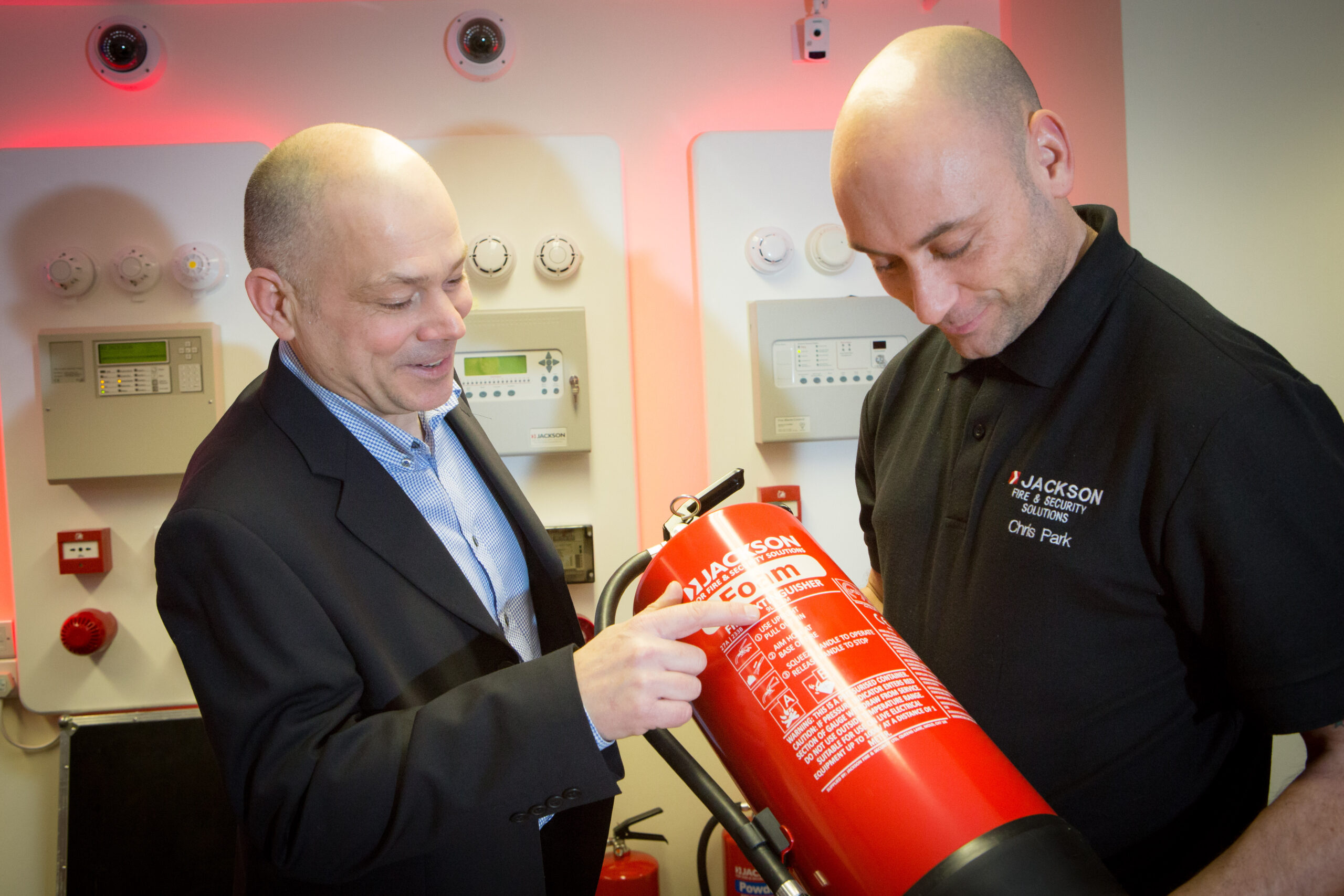We’re continuing our series based on the fire and security questions our engineers are frequently asked when they are out with customers. This month we’ll be addressing the confusion that sometimes exists about what kinds of fires CO2 fire extinguishers, dry powder fire extinguishers and water fire extinguishers can be used for.
What is a carbon dioxide (CO2) fire extinguisher used for?
Carbon Dioxide (CO2) fire extinguishers can be identified by their black label and are for use on Class B fires, which are those that involve flammable liquids like paraffin, petrol or paint. They are also ideal for locations where there is a lot of electrical equipment, and therefore a risk of electrical fire, such as offices and as they are safe to use on electrical apparatus.
CO2 fire extinguishers work by smothering the fire and reducing the oxygen level so there isn’t enough for the fire to feed on. CO2 is ice cold when it’s released from the fire extinguisher it also means the user must be extremely careful as it’s possible to get serious cold burns if skin comes into contact with the fire extinguisher horn. Although some CO2 extinguisher horns are frost-free, to be on the safe side never touch them when the extinguisher is in use.
What is a dry powder fire extinguisher used for?
Dry powder fire extinguishers extinguish the fire primarily by interrupting the chemical reaction taking place and cutting off the oxygen supply. They can be used on fires involving solid combustibles, flammable liquids and electricity. When considering a dry powder fire extinguisher for a premises with electrical goods, it is worth noting that these extinguishers leave a residue that may be harmful to sensitive electronics. The dry power fire extinguishers are denoted by a blue label and are dangerous if inhaled and can cause visibility to be reduced. This extinguisher is ideally suited to businesses using chemical processes, where welding and flame cutting takes place, garage forecourts and premises with large, commercial boiler rooms. Specialist dry powder extinguishers are also available for use on flammable metals only.
What are water fire extinguishers used for?
Water fire extinguishers are colour coded with a red label and should only be used for Class A fires, which are those that are fuelled by solid combustible materials like paper, wood or textiles. They must never be used on fires involving electrical equipment because of the risk of electric shock. Water fire extinguishers aren’t suitable for Class B fires either (fires fuelled by flammable liquids like oils, grease and petrol) as the discharge stream could actually spread out the flammable liquid.
Water fire extinguishers work by pressurised water cooling the burning material. To use them safely, direct the jet at the base of the flame and keep it moving across the area of the fire. If the fire is spreading vertically, aim the water fire extinguisher at the fire’s lowest point then follow upwards. Watch out for hot spots that could still exist after the main fire appears to be extinguished.
Choosing the right fire extinguisher
It’s really important that you have the right fire extinguishers in place to address the specific risks in your workplace so it’s worth getting professional advice to ensure you have the right fire extinguisher types installed in the right location near the source of the fire risk and/or near fire exits.
Make sure fire extinguishers remain in good working order by getting them serviced by a BAFE registered engineer every year. It’s also worth becoming familiar with how extinguishers work in case you need to use one so you could consider attending a short fire extinguisher practical course too. If you’d like further advice about using fire extinguishers in your premises, please visit our fire extinguisher page for more information or get in touch with us.
Next month we’ll be focusing on how you know how many fire extinguishers are required and explaining the need for a wet chemical fire extinguisher.
Jackson Fire & Security are BAFE approved to service and maintain fire extinguishers to British Standards throughout North Wales, Cheshire, North West England, West Midlands, Yorkshire, Teesside, Cambridgeshire and Surrey. For any other queries relating to fire extinguishers that we may not have answered, please do not hesitate to contact us via email or by using the live chat feature of our website.
One complete fire and security solution
Need a local team to help with fire safety and security?
